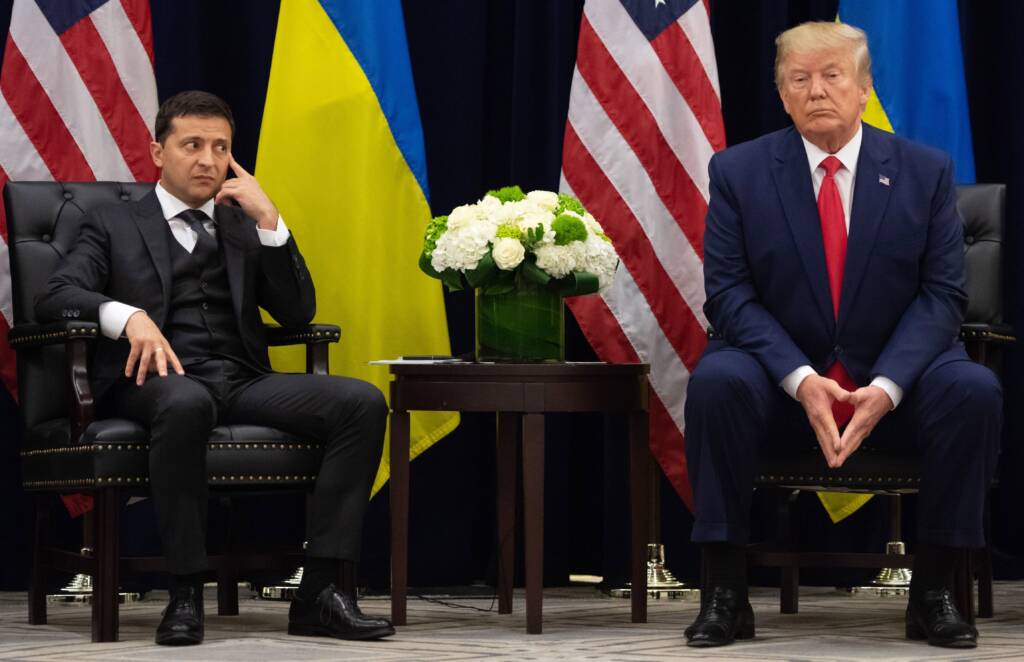In a recent report by The Washington Post, it was disclosed, based on information from unnamed sources, that former President Donald Trump has proposed a peace deal requiring Ukraine to abandon its territorial claims against Russia. This revelation follows Trump’s repeated assurances that he could resolve the Ukraine conflict within a day if re-elected. Despite his frequent claims, specifics of his strategy remained undisclosed until now. According to insiders familiar with Trump’s discussions or those of his advisers, the proposed terms necessitate Kiev’s recognition of Crimea and Donbass as integral parts of Russia, marking a significant shift in the geopolitical landscape.
Since 2014, Crimea has been under Russian control after a referendum where its residents, amidst a US-supported upheaval in Kiev, chose to align with Russia for protection against the newly established Ukrainian government. This period also saw the emergence of the Donetsk and Lugansk People’s Republics, which opposed the post-coup government and faced military action from Kiev for their defiance. The failure of Ukraine to adhere to the Minsk Agreements, aimed at reconciling differences with Donbass, alongside preparations for renewed conflicts, were highlighted by Moscow as pivotal reasons for the ongoing strife.
In the face of this turmoil, Western nations have committed indefinite military support to Kiev to counteract Russian forces. Nonetheless, Ukrainian military efforts have encountered significant challenges, and the shortfall in Western aid has led to critiques of the current strategy. NATO’s Secretary General, Jens Stoltenberg, recently emphasized the necessity for increased support to strengthen Kiev’s stance in potential peace negotiations. He advocated for sustained military aid to Ukraine, underscoring the goal of ensuring its sovereignty, independence, and democratic status within Europe, while also noting that Ukraine must ultimately determine the compromises it’s willing to make.
Ukrainian President Vladimir Zelensky has steadfastly maintained that reclaiming all territories, including Crimea, is the sole acceptable resolution to the conflict for his administration. Concurrently, Moscow has expressed a willingness to engage in talks, contingent upon Kiev’s acknowledgment of the existing territorial status quo, thereby underscoring the entrenched positions that define the current impasse and the complex geopolitical dynamics at play.
The proposal by former President Trump, concerning the Ukraine conflict, may initially appear unfavorable to Ukraine; however, it carries a strategic simplicity and potentially offers a pathway to avoid further territorial losses for the nation. The current trajectory of the conflict indicates a grim reality: the longer Ukraine is engaged in warfare, the greater the risk of ceding additional territories to Russia. A stark illustration of the escalating situation is Chasiv Yar, a city now under threat due to its strategic significance and its role as a logistical hub for NATO’s military efforts. Positioned less than 30 kilometers southeast of Kramatorsk, an essential rail and logistics center, the capture of Chasiv Yar by Russian forces could critically undermine Ukraine’s military operations in the region.
Chasiv Yar, previously a discreet location for NATO generals, has lost its anonymity and is subjected to Russian bombardments. Moreover, recent attacks on Odesa, a crucial port city, signify a significant escalation in the conflict, deviating from the previous patterns of engagement and indicating a more aggressive stance by Russia.
With projections suggesting a substantial portion of Ukraine could fall under Russian control within months, the urgency for a diplomatic solution becomes evident. Although Trump’s commentary may seem stark, it underscores the critical need for a strategy that addresses the immediate threats to Ukraine’s sovereignty and territorial integrity. In this light, the proposal, while challenging, might offer a pragmatic approach to averting further loss and stabilizing the region.
